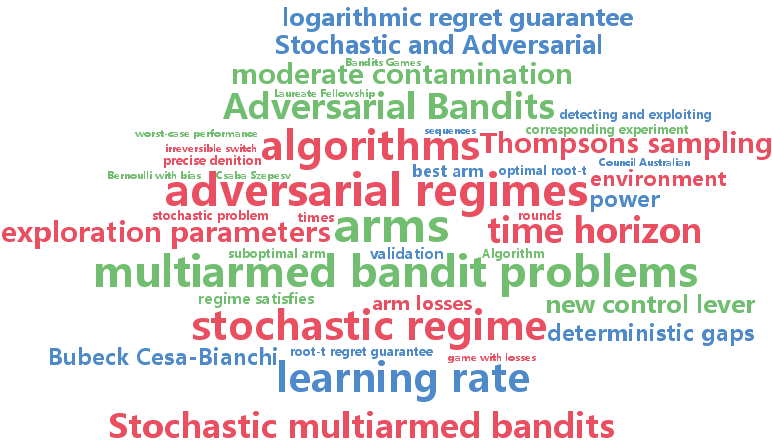learning rate
-
Panagiotis Toulis and Edoardo Airoldi and Jason Rennie
Statistical analysis of stochastic gradient methods for generalized linear models (pdf)
We study the statistical properties of stochastic gradient descent (SGD) using explicit and implicit updates for fitting generalized linear models (GLMs). Initially, we develop a computationally efficient algorithm to implement implicit SGD learning of GLMs. Next, we obtain exact formulas for the bias and variance of both updates which leads to two important observations on their comparative statistical properties. First, in small samples, the estimates from the implicit procedure are more biased than the estimates from the explicit one, but their empirical variance is smaller and they are more robust to learning rate misspecification. Second, the two procedures are statistically identical in the limit: they are both unbiased, converge at the same rate and have the same asymptotic variance. Our set of experiments confirm our theory and more broadly suggest that the implicit procedure can be a competitive choice for fitting large-scale models, especially when robustness is a concern.
-
Yevgeny Seldin and Aleksandrs Slivkins
One Practical Algorithm for Both Stochastic and Adversarial Bandits (pdf)
We present an algorithm for multiarmed bandits that achieves almost optimal performance in both stochastic and adversarial regimes without prior knowledge about the nature of the environment. Our algorithm is based on augmentation of the EXP3 algorithm with a new control lever in the form of exploration parameters that are tailored individually for each arm. The algorithm simultaneously applies the ``old'' control lever, the learning rate, to control the regret in the adversarial regime and the new control lever to detect and exploit gaps between the arm losses. This secures problem-dependent ``logarithmic'' regret when gaps are present without compromising on the worst-case performance guarantee in the adversarial regime. We show that the algorithm can exploit both the usual expected gaps between the arm losses in the stochastic regime and deterministic gaps between the arm losses in the adversarial regime. The algorithm retains ``logarithmic'' regret guarantee in the stochastic regime even when some observations are contaminated by an adversary, as long as on average the contamination does not reduce the gap by more than a half. Our results for the stochastic regime are supported by experimental validation.

